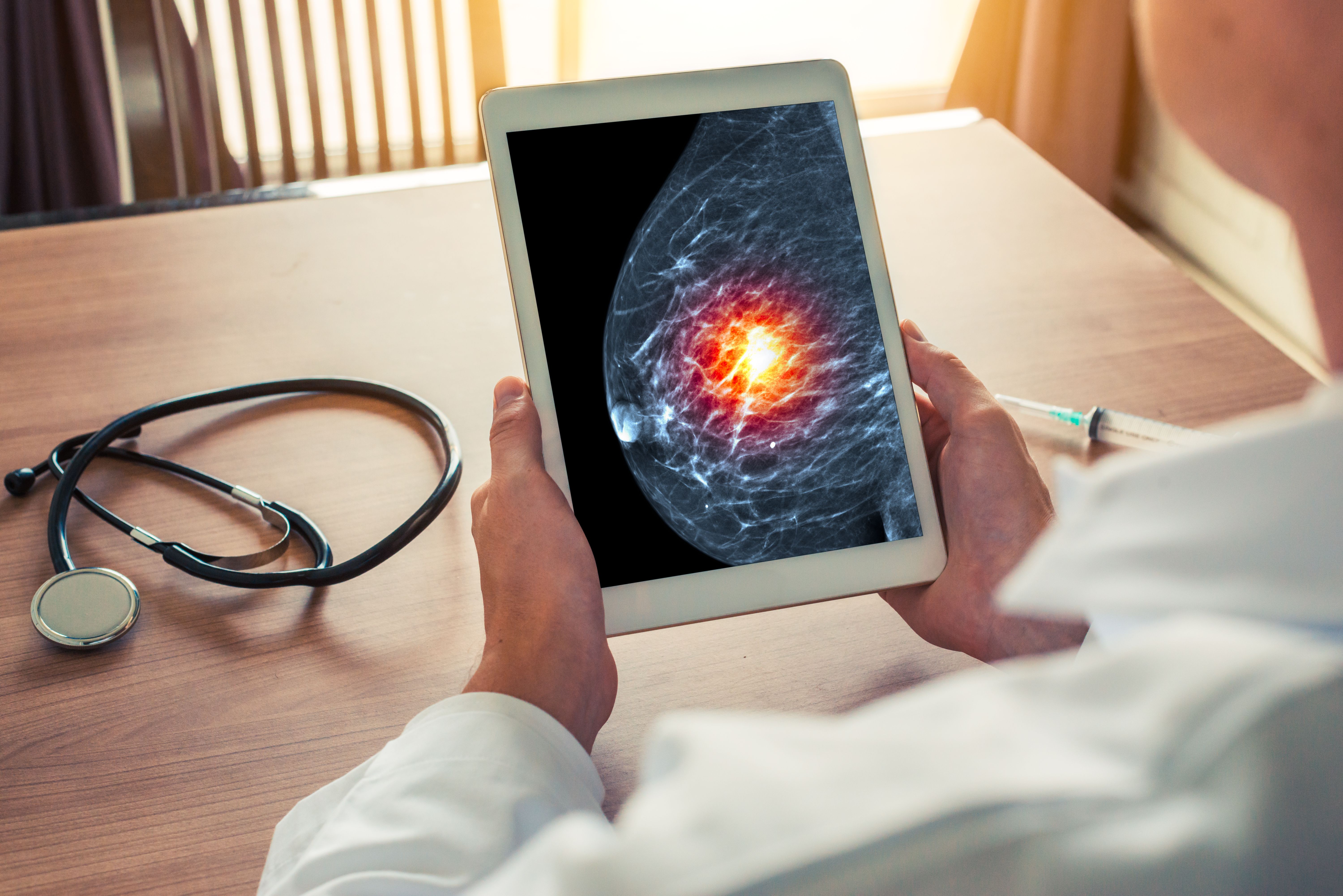Article
Combination Therapy With Alpelisib Can Reduce PI3Kα Inhibition In Advanced Breast Cancer
Author(s):
Alpelisib plus the antioxidant N-acetylcysteine sensitizes NF1 knockout cells to PI3Kα inhibition and reverts their glycolytic phenotype in patients with advanced forms of breast cancer.
The combination of antioxidant N-acetylcysteine (NAC) with phosphatidylinositol 3-kinase α (PI3Kα)-selective inhibitor alpelisib (Piqray, BYL719) may inhibit mammalian target of rapamycin (mTOR) signaling and reduce tumor cell proliferation in patients with advanced forms of breast cancer, according to the results of a study published in Cell.
Credit: steph photographies - Austria - stock.adobe.com.

In recent mouse models, tumors resistant to the PI3Kα-selective inhibitor experienced a loss of neurofibromin 1 (NF1), correlated with enhanced glycolysis and lower levels of reactive oxygen species (ROS) that can prevent optimal immunity against the tumor.
“Cancer cells lacking NF1 are metabolically more glycolytic and are overall more reduced in terms of their redox balance than the controls,” the investigators wrote in the paper. “Unexpectedly, the antioxidant [NAC] sensitizes NF1 knockout cells to PI3Kα inhibition and reverts their glycolytic phenotype.”
PIK3CA mutations affect 1 in 3 breast tumors, and nearly 70% of breast cancers have mutated genes that activate the phosphatidylinositol 3-kinase (PI3K) pathway. Although PI3K inhibitors are effective if there is no resistance, in this instance, NF1 loss is a resistance mechanism.
The advent of genetic screens allowed investigators to identify and characterize the mechanism of resistance. Transposon-mediated screens are particularly good at highlighting gain-of-function and loss-of-function mutations, allowing experts to study the genetic factors that drive tumor development, resistance, and metastasis.
The current study used a genome-wide transposon-mediated mutagenesis screen to find the mutations that drive PI3Kα inhibition. They combined the PiggyBac (PB) transposon system with a murine whey-acidic protein (WAP)-driven and PIK3CA mutant mammary tumor model to identify resistant tumors that could be evaluated for resistance-promoting mutations.
The study showed that NAC reduced the phosphorylation of mTOR-associated proteins. NAC functions by sensitizing cancer cells (with low levels of NF1) to PI3Kα inhibition. AlthoughNAC normally has 3 mechanisms—oxidant scavenging, glutathione replenishment, and disulfide bond reduction—investigators cannot confirm which is responsible for sensitizing cancer cells to the therapy.
The team also found that low levels of NF1 in cancer cells had higher MYC expression and activity. MYC may be one of the main drivers of PI3Kα inhibition in advanced cancer cells, and more research should be conducted, according to the authors.
When confronted with the combination of NAC with alpelisib, NF1 knockout (NF1 KO) cells (NF1 cells treated with the CRISPR-Cas9 system and later treated with PI3Kα inhibition) had less proliferation and more sensitization to the inhibition treatment. NAC even began to normalize glycolysis levels in certain NF1 KO cells.
A limitation of the study includes the use of alpelisib without testing other (pan-)PI3Kα inhibitors. In addition, in vivo experiments were performed in animals without an intact immune system, investigators only studied 1 antioxidant, they found little specified evidence on the NF1-loss mediated resistance mechanism, and they did not study effects on metastases.
Early-stage breast cancer treatment has improved in the past 2 decades, but recurring metastatic cancers are often drug resistant, therapy resistant, and survival has not improved significantly.
“Our results raise the attractive possibility of combining PI3Kα inhibition with NAC supplementation, especially in patients with drug-resistant metastases associated with NF1 loss,” the study authors wrote.
Reference
Maur P, Trefny M, Baumann Z, et al. N-acetylcysteine overcomes NF1 loss-driven resistance to PI3Kα inhibition in breast cancer. April 11, 2023. DOI:https://doi.org/10.1016/j.xcrm.2023.101002
Newsletter
Stay informed on drug updates, treatment guidelines, and pharmacy practice trends—subscribe to Pharmacy Times for weekly clinical insights.






